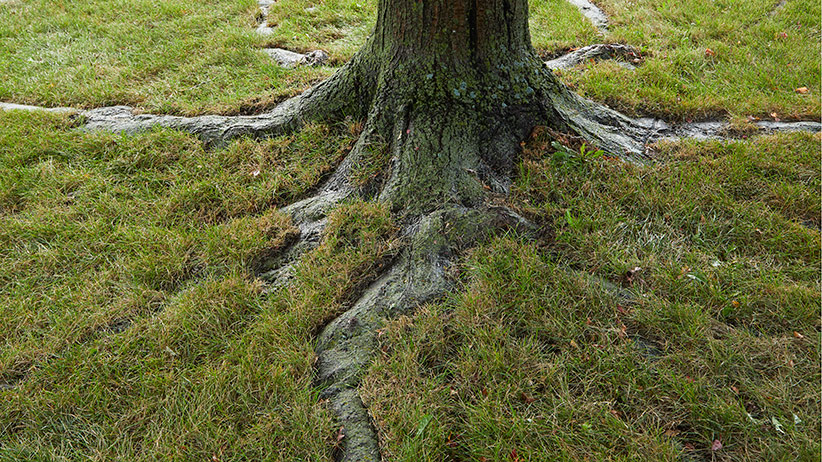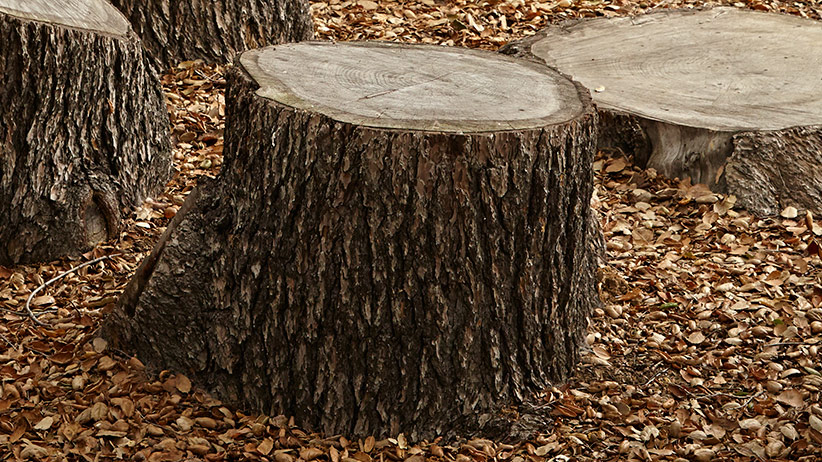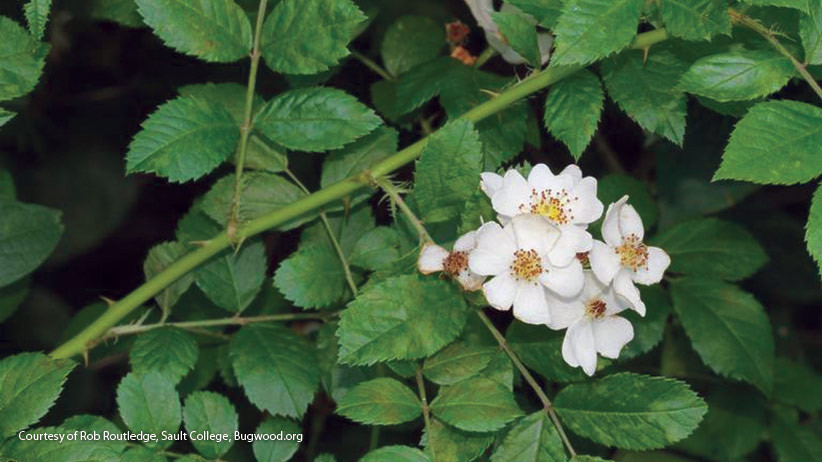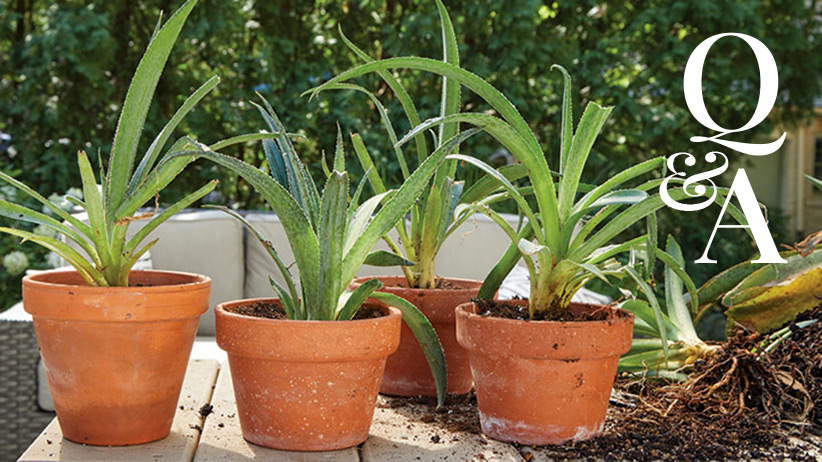Try these five methods to get rid of weeds without hand-pulling!
In the midst of summer, sometimes it’s all a gardener can do to stay ahead of the weeds. But keeping your garden weed-free doesn’t always have to be back-breaking work. Try these “no pull” methods.
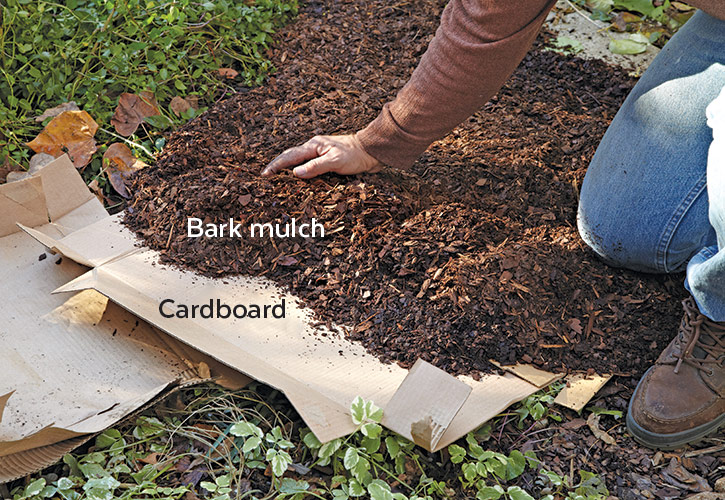
1. Spread mulch to keep weeds down
A neat layer of mulch keeps weed seeds in the dark so they don’t germinate. It can also be dry and inhospitable for sprouting weed seeds that have blown in on top, preventing roots from reaching moist soil below. Mulch works anywhere, even in vegetable gardens where organic mulches like straw and compost can be incorporated into the soil at the end of the season. For flower beds and borders, use bark chips, shredded leaves or gravel.
Mulching tips
Spread a 2- to 3-inch layer of mulch over the top of weed-free soil, leaving 1 to 2 inches around the base of plants so crowns won’t rot from too much moisture. If you can’t start with a weed-free bed, cut weeds down to the ground, cover them with a layer of cardboard, as in the photo above, or several sheets of dampened newspaper, then spread mulch on top. This barrier will smother the weeds in a matter of weeks. In spring, top off with a light layer to freshen the mulch.
You Might Also Like:
Are You Using the Right Garden Mulch?
5 Common Weeds
More Tips to Control Garden Weeds
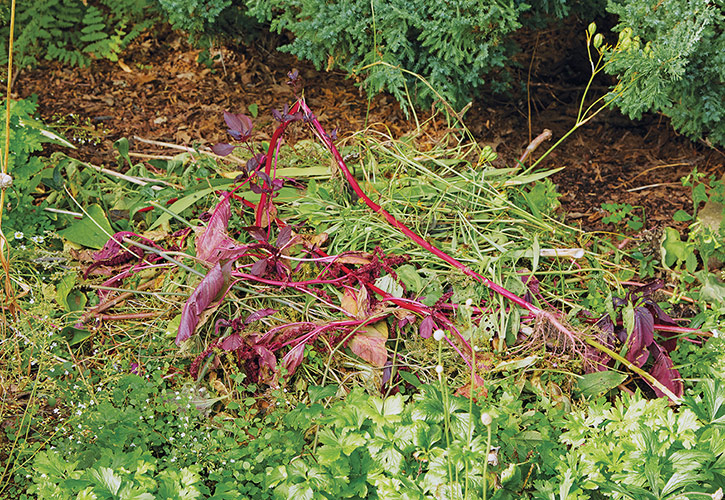
2. Chop & drop weeds in the garden
Did you know pulling weeds can disturb the soil and bring seeds to the surface where light helps them germinate? But if you cut a weed off at the ground, no soil is stirred, and the chopped plant can be dropped to compost in place and enrich the soil, like the tidy pile in the photo above. This chop and drop method works best to control annual weeds before they set seed in flower beds and in vegetable gardens that don’t need to look pristine.
How to use the chop & drop method
Use pruners or a soil knife to slice weeds off at or just below the soil level. Tuck the debris under other plants or in the back of the border, where it will act as a mulch. Perennial weeds and some annuals can regrow from the root and may need to be chopped back several times before they exhaust stored energy and die. Be sure to chop and drop before weeds bloom or set seed, as seeds can mature even after being cut from the mother plant. If seeds have already formed, deadhead and toss that part in the trash, then chop and drop the rest of the plant. Some weeds, such as creeping Charlie and Japanese knotweed, send down roots where stems (and even cut stems) come in contact with the soil so they’re not good candidates for this method.

3. Plant closely to suppress weeds
Perennial borders and annual beds are perfect spots to plant closely. Weeds have a hard time competing for light, water and nutrients where other plants are already filling up the soil with roots and shading it with their foliage. Vegetables need more room to grow and produce, so this method isn’t as effective there.
How to do it
Most plants have a recommended spacing listed on their labels when you buy them; shave off 25% of that distance to plant closer. In these conditions, you may need to divide plants more often as they grow and spread. Large-leafed plants, like the hostas (Hosta spp. and hybrids) and brunnera (Brunnera macrophylla) in the photo above, are particularly adept at filling in and crowding out weeds. However, plants that are prone to fungal diseases, such as roses (Rosa spp. and hybrids), bee balm (Monarda didyma) and garden phlox (Phlox paniculata), need more air circulation and shouldn’t be crowded.
You Might Also Like:
Gardener's Problem Solver Book
5 Home Remedies for Fungal Disease in the Garden
Watch Our Helpful Gardening Videos on YouTube
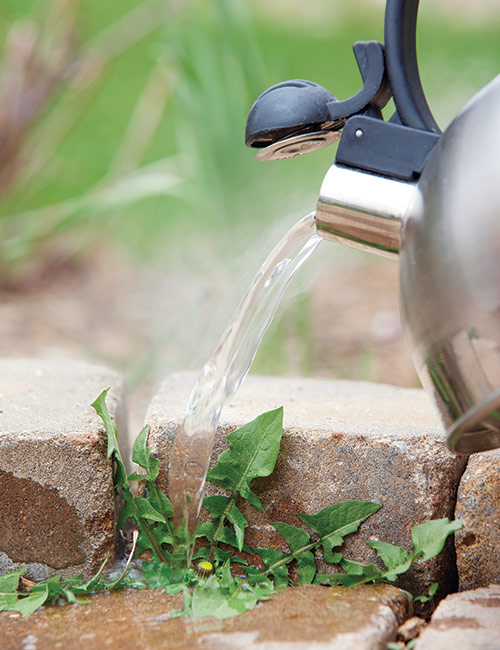
4. Use hot water to kill weeds
Hot water melts the waxy cuticle on leaf surfaces, which dehydrates and kills the plant. Because treating large areas can be time-consuming, this method works best to spot treat in beds and lawns, as well as between pavers and sidewalk cracks. Broadleaf weeds like dandelion (Taraxacum officinale) and lambsquarters (Chenopodium album) are killed easier with hot water than grasses or fleshy foliage like purslane (Portulaca oleracea) are.
How to use this technique
A teapot is the easiest way to direct the flow of hot water over a weed. Water should be at least 200 degrees F (water boils at 212 degrees F) to work. Try using water drained from cooked vegetables or pasta to recycle that waste water. After a few days, the parts of the plant that were exposed to the hot water will turn crispy and brown. Keep in mind that roots won’t be affected and you’ll need to treat many plants more than once to kill them. Wear oven mitts, pants and close-toed shoes to avoid accidental burns from splashing hot water.

5. Burn weeds with thermal weeding
Thermal weeding uses flame or a very intense light spectrum to generate heat that disrupts plant cells and causes leaves to wilt. In a few days foliage dries up and can be brushed away. Thermal weeding works best on small annual broadleaf weeds, seedlings and spreading weeds like prostrate spurge (Euphorbia maculata) or creeping Charlie (Glechoma hederacea), especially in sidewalk cracks and gravel paths. Tough perennial weeds may take multiple applications.
Weed flaming precautions!
- NEVER burn near dry grass, flammable mulches or dry leaf litter.
- NEVER burn poison ivy (Toxicodendron radicans) or toxic plants that can release irritants into the air and could be inhaled.
- Check local regulations to make sure it is legal.
Tips for thermal weeding
You can flame weed with a propane weed torch designed for garden use, like the Bernzomatic Outdoor torch in the photo above. It should have an extended nozzle that reaches to the ground so you won’t have to bend down. Being careful to avoid plants you want, pass the flame over weed foliage for a few seconds until the leaves look limp (weeds don’t go up in flames, much as we’d like to see that!).
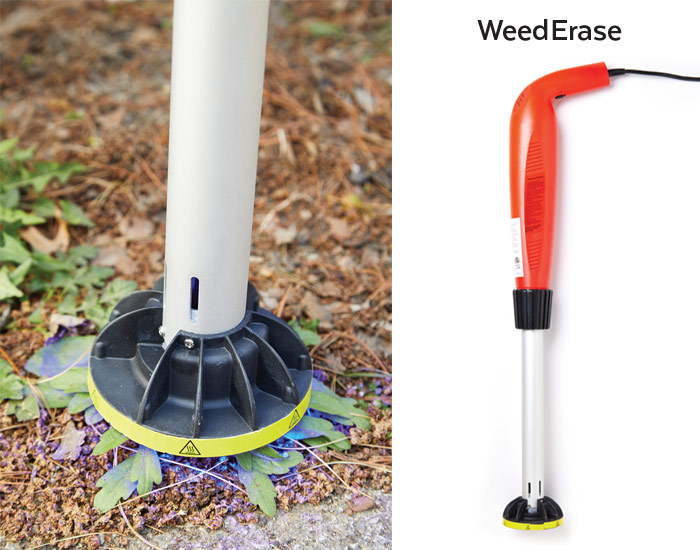
Use light to kill weeds
To use light to kill weeds, use a directed beam of intense light from the electric-powered WeedErase. If new foliage sprouts after you’ve flamed or zapped it, hit it again until the root uses up its stored energy trying to regrow and finally expires. Be sure to wear closed-toed shoes so you don’t burn your feet accidentally.









